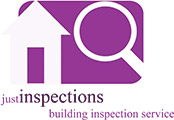The formation of efflorescence appears frequently on brick, concrete structures and other masonry surfaces. The efflorescence results in unappealing surface appearances, indicating potential moisture issues. But before learning about its removal methods or prevention techniques, you need to know first what is efflorescence.
As experts in building inspection and pre-purchase inspections in Melbourne, we understand how efflorescence can impact property value and integrity.
So, let’s explore everything you need to know about it:
What is Efflorescence?
Water transport through masonry materials creates surface accumulation of dissolved salts, forming efflorescence. The evaporation process makes water-dissolved salts visible as white or greyish residues. Although this substance creates no structural risks, poor water quality requires investigation.
What Causes Efflorescence?
Multiple reasons lead to the formation of efflorescence across masonry structures:
- Moisture: The presence of water during the process enables salts in masonry materials to dissolve. Masonry surfaces develop efflorescence when water from rain, ground supply or building works enters the material.
- Soluble Salts: Masonry materials naturally contain salts. The solution of salts present in water results in the production of efflorescence.
- Evaporation: The drying process of water in bricks and concrete results in salt deposits that become visible as white formations.
Where Can Efflorescence Occur?
The appearance of efflorescence happens on multiple masonry surfaces, which include:
- Brick walls and chimneys
- Concrete driveways and sidewalks
- Basement walls
- Retaining walls
- Pavers and tiles
You should inspect these areas for white streaks and powdery compounds because these signs may indicate efflorescence.
Is Efflorescence Harmful?
Yes, efflorescence may worsen moisture issues in the underlying structures. Efflorescence signals that a structure might have moisture issues that could harm its value by causing structural damage, mold generation, and material deterioration. So, ignoring moisture issues will result in their further worsening while creating new complications.
How to Remove Efflorescence?
The removal process of efflorescence proves relatively straightforward as long as the problem gets detected quickly. Here are some effective methods:
Dry Brushing
To tackle light efflorescence, use a strong brush to remove powdery deposits. Applying this method succeeds when surfaces remain dry.
Washing with Water
Using clean water for rinsing can often dissolve efflorescence from surfaces. Avoid long water exposure when using the hose or pressure washer to clean the material because it will drive salts deeper into the material.
Vinegar Solution
Combine white vinegar and water by measuring at equal volumes. The solution requires a sponge or brush to be applied to the affected area before allowing it to rest for several minutes, followed by brushing and cleaning it with fresh water.
Commercial Efflorescence Cleaners
Using specially made efflorescence removal solutions becomes necessary when home treatments fail to resolve the issue. Don’t forget to follow the manufacturer’s instructions carefully.
Muriatic Acid (Emergency Measure)
In cases where other methods fail, you can dilute muriatic acid. It is important to use proper safety equipment and follow all directions during muriatic acid applications because this chemical has high strength.
Does Efflorescence Damage Concrete?
The formation of efflorescence demonstrates water permeability in concrete even though the substance itself does not weaken concrete material. However, prolonged moisture exposure of concrete leads to deterioration and structural damage by cracking.
Efflorescence in Brickwork vs. Effervescence in Concrete
In brick efflorescence, white salt deposits form that affect brick surfaces. This phenomenon results from brick materials absorbing moisture through rain or groundwater contact. The salt migration process within brickwork structures leads to walls developing an aged and unclean appearance.
On the other hand, effervescence formation in concrete results in bubble or gas emissions from fresh concrete but does not create surface salt deposition.
How to Prevent Efflorescence?
The most effective strategy to handle efflorescence involves preventative measures to guarantee that repeated removal won’t be required. Here’s how:
Use High-Quality Masonry Materials
Bricks, concrete, and mortar containing low salt quantities help stop the formation of this reaction.
Proper Drainage and Waterproofing
The primary factor leading to efflorescence development is moisture. A proper drainage system and waterproof coatings must be implemented to stop water from reaching masonry surfaces.
Seal the Surface
Masonry surfaces treated with top-quality sealer keep out moisture that causes efflorescence to form.
Keep Surfaces Dry
Proper surface drying requires leak repairs, basement dehumidification, and a reduction of nearby plant water.
Proper Construction Techniques
Applying well-mixed mortar and vapour barriers along with waterproof membranes during construction will block the formation of efflorescence.
When to Call a Professional?
You should consult a professional when efflorescence persists after repeated cleaning attempts or shows no signs of stopping. Experts can thoroughly evaluate water infiltration problems. They will also suggest permanent solutions, including improved drainage systems, better waterproofing materials and different building techniques.
Final Thoughts
Understanding what is efflorescence will help you develop effective strategies for its removal and prevention. Most areas where efflorescence appears do not pose safety risks; however, they might signal water-related damage to the structure. Therefore, protecting your home or building requires continual maintenance on masonry surfaces combined with dry conditions. Also, you must consult building professionals if you experience ongoing efflorescence problems.
Don’t wait until minor issues become major expenses. Contact us today for a comprehensive inspection to ensure your property is safe, secure, and free from hidden problems.

